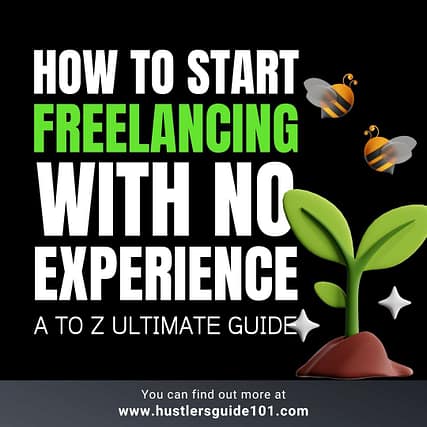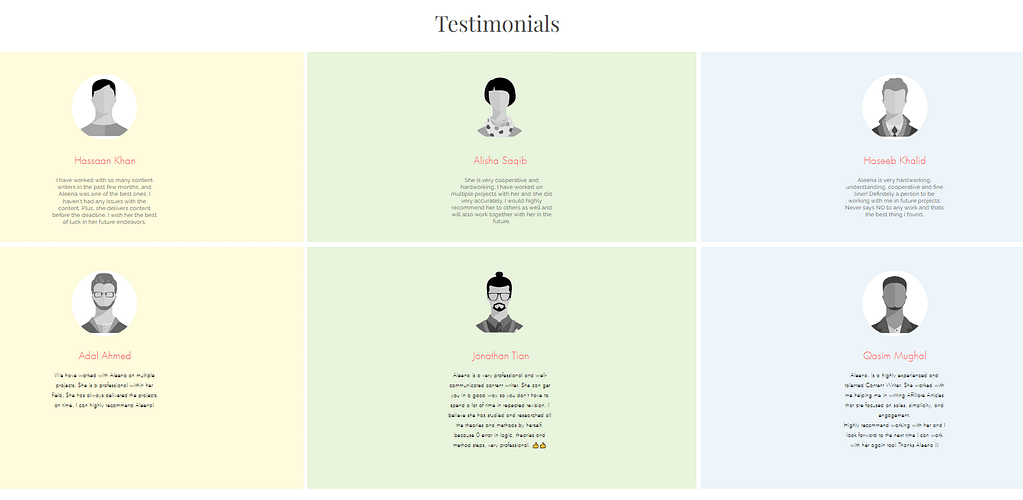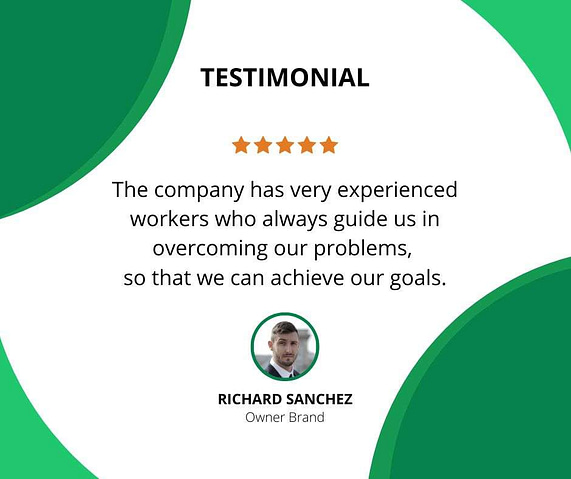
Are you wondering about all that hype internet has created around freelancing and want to give it a try? Or are you a student who wants to kick start his career in freelancing while counting his studies? Well, whatever the reason is. I can totally understand you. And that’s why I present to you this step-by-step guide on how to start freelancing with no experience.
Did you know? 65% of freelancers earn more money than they would make in a regular job. Yes, it is absolutely possible. In freelancing, you are able to control what projects you want to take and what projects you want to reject.
Similarly, you can also set the price of your services according to how much value you can provide to your client. Here is another fun fact. Thousands of people search for “how to start freelancing with no experience?” and this is the only guide you will need to get started.
What is Freelancing? (Freelancing definition)
The definition of freelancing is to provide specific services to different companies to businesses without any full-time contracts. People can take on multiple projects in freelancing.
Whereas, in full-time employment, you cannot sign contracts or work outside the company. Most people mistake that there are no contracts in freelancing. But one can sign contracts according to the convenience that states the deliverables, prices, and deadlines.
How did I start freelancing?
Before we jump into the guide, I want to share a little story with you. How I started freelancing with literally zero experience and made it through the entire journey.
Once I came to know through a friend that someone is looking to hire a freelance content writer. Of course, I wanted to jump on the opportunity immediately but I had my doubts. What if I fail, what if I cannot do it right, what if I cannot handle it with my studies, and blah blah blah. Well, I got over it, wrote a sample, and got selected.
My first ever client!!! I was excited!!! But. He was paying me peanuts. There was a hell load of work. I was going to be paid after a month so again doubts aroused. Yeah, you can say I am an overthinker. I worked on his projects for a year while learning everything about SEO and writing.
Then I came to know about LinkedIn from a cousin. Well, you can guess who gave it a shot. I got my account up and running, learned how it worked, optimized my profile, network with people and guess what? Till now, I was able to work with local as well as international clients. I went from my first payment of X to 5X and more on some projects.
It was hell good of a journey but why I am telling you of all of this? Because if I kept thinking about it at the beginning or the failures I faced during the journey, I wouldn’t be able to know if this will work for me or not. All I am saying to you is there is only one way to know. Try, learn and show up every single day.

Step-by-Step Guide on how to start freelancing with no experience
That’s enough of the emotional story and motivation. Let’s move to how you can start freelancing with no experience.
Freelancing is no joke and can be tough when you don’t know where to take start from or how you are going to proceed. Here in this guide ‘how to start freelancing with no experience’ I am going to show you step by step process you can follow to take your step first in freelancing to how you can make a career out of freelancing.
Step #1: Pick a profitable skill
The most crucial step is to pick a profitable skill. It’s important to choose a skill that is in demand and will be profitable in order to succeed as a freelancer. Here are a few tips for selecting a profitable skill to start freelancing:
- Identify your strengths and passions: The most successful freelancers are those who are passionate about their work and excel at their chosen skills. Think about what you enjoy doing and what you are naturally good at, and consider how you can use those skills to help others.
- Research the market: Look for trends and see what skills are in high demand. This will give you an idea of what services are likely to be profitable. You can also look at job postings or ask potential clients what they are looking for in a freelancer to get an idea of the skills that are most in demand. You can also go for sub-niches of a profitable skill to get started.
One of the most important factors in choosing the right skill for freelancing is to look for how much earning potential and demand a skill has. Read about the earnings of different skills here and choose the right skill for yourself. Learning and practicing soft skills can give you a headstart in your journey too.

Step #2: Learn, Learn & Learn
After you have picked a skill you want to master, you need to learn and practice every single day so you can outdo your competition and mark your name in the freelancing world.
Learning a new skill can be intimidating, especially if you are planning to use that skill to make a living as a freelancer. However, with the right approach and resources, it’s possible to learn any skill you need to succeed as a freelancer. Here are a few tips for learning a new skill:
- Set clear goals: Before you start learning a new skill, it’s important to have a clear idea of what you want to achieve. This will help you to focus on your goals and motivated as you learn.
- Find resources: There are many resources available for learning new skills, including online courses, books, and workshops. Choose resources that align with your learning style and goals. Here are some of the most popular courses you can take to learn profitable skills accordingly. The good news is you can get these courses for free!
- Practice regularly: The best way to learn a new skill is through practice. Set aside dedicated time each week to practice and work on your skills.
- Get feedback: Seeking feedback from others can also help you identify areas for improvement and keep you motivated. Consider finding a mentor or joining a community of other learners to get support and feedback.
- Keep learning: As you continue to learn and grow as a freelancer, it’s important to stay up to date with new developments in your field. Consider taking additional courses or workshops to stay current and improve your skills.
Step #3: Get some testimonials
As a freelancer, one of the most effective ways to promote your services and attract new clients is through testimonials and referrals from satisfied customers. Basically, testimonials serve as social proof that you are reliable, skilled, and trustworthy, and they can help build credibility and trust with potential clients. But how you can get testimonials in the first place when you don’t have any clients?
Well, this is the most underrated way of gathering testimonials. Work for free. No, it does not look as scary as it seems. You can help people with struggling brands by working for free for them while they help you with good testimonials. A win-win situation for both. Now, use these testimonials to get high-paying clients. How to take full advantage of testimonials?
- Use a variety of sources: Don’t just rely on written testimonials – consider asking clients to record a video testimonial or leave a review on a platform like LinkedIn or Google. This can help provide a more comprehensive view of your services and skills.
- Use testimonials in your marketing materials: Once you have collected a few testimonials, be sure to showcase them prominently on your website, social media profiles, and other marketing materials. This will help build trust and credibility with potential clients.

Step #4: Build your portfolio
You now have skills, practice, testimonials, and expertise on a problem you can solve. What’s next? Building a strong portfolio. But is it really necessary to have a portfolio? While this is everyone’s individual choice, having a portfolio gives your client a good view of what he can expect and if you can help him in the right way.
Ask your clients if you can use their project references in their portfolios. If they say yes, go for it. If they don’t, get some sample work done by treating yourself as a client. What does a strong portfolio consist of?
- Services you provide
- The problem you can solve
- Your sample work
- Testimonials you gathered
- Your pricing (not necessary but good to have)
- Why you are the best fit
You can also spice things up by adding some achievements, certificates, or courses you took during this journey.

Step #5: Finding the right clients
It is now time to get some clients. With multiple freelancing sites such as Fiverr, Upwork, LinkedIn, or Freelancer, it is easier than ever to get clients but getting a commission cut off from your hard-earned money doesn’t seem right. You can find tons of tutorials online about how to start on these platforms so I did something different for you.
There are many ways to find freelance clients, and the best approach will depend on your skills, experience, and industry. Here are a few strategies you can try:
- Create a professional online presence: Having a website or online portfolio can help potential clients find you and learn more about your work. You can also create profiles on freelance job platforms or social media sites like LinkedIn to showcase your skills and experience.
- Network and connect with potential clients: Attend industry events and conferences, join relevant online groups and forums, and reach out to people in your network to see if they know of any opportunities.
- Bid on freelance job postings: There are many websites and platforms where companies and individuals post freelance jobs. You can create an account and start bidding on projects that match your skills and expertise.
- Market your services: Consider promoting your services through targeted ads, email marketing, or by offering free samples of your work to potential clients.
- Partner with other freelancers or agencies: Collaborating with other freelancers or agencies can help you tap into their networks and find new clients.
Remember, it may take time and effort to build a client base as a freelancer. Though it can be helpful to have a clear idea of your target market and to consistently market your services to potential clients.
Step #6: Make Money
Everything next is simple. You have clients. Get the work done. Deliver. And take your charges. While this step seems pretty much straightforward, you might want to consider these crucial facts if you want to retain your long-term clients as well as keep your name in the industry.
- Deliver high-quality work: This is the most important factor in retaining clients. Make sure to meet deadlines, communicate effectively, and go above and beyond to ensure that your clients are happy with the work you deliver. Before starting work on projects, make sure you have a signed contract.
- Build strong relationships: Take the time to get to know your clients and understand their needs and preferences. Being approachable and responsive can help build trust and strengthen your relationships with your clients.
- Be flexible and adaptable: Be open to feedback and willing to make changes or adjustments to your work as needed. This shows your clients that you are willing to go the extra mile to meet their needs.
- Offer value beyond the scope of the project: Look for opportunities to provide additional value to your clients, such as offering advice or resources that can help them achieve their goals.
- Keep in touch: Stay in regular contact with your clients, even after a project is completed. This can help keep you on top of your mind and make it easier to secure future work.
Step #7: Keep upskilling
It’s important to continuously invest in your education and skills as a freelancer to ensure that you are providing the best possible service to your clients and staying competitive in the market. Since upgrading your skills as a freelancer can have numerous benefits. Here are a few reasons why you may want to consider upskilling soon:
- Increase your value to clients: By constantly learning and expanding your skills, you can offer more services to your clients and become a more valuable asset to their business.
- Stay competitive: The freelance market is constantly evolving, and it’s important to keep up with new technologies and best practices to stay competitive since you want to strive in freelancing.
- Open up new opportunities: Upgrading your skills can help you qualify for higher-paying jobs and broaden your range of potential clients.
As people continue to grow in freelancing, they also hire additional help to build a team and create their freelance agency. I have taken care of all things. Here you can learn how to create a freelance agency and what factors you need to consider while hiring freelancers for your team.
Hot FAQs on How to start freelancing with no experience
How to get paid as a freelancer?
Getting paid as a freelancer is one of the biggest issues most people fail during their journey. But you don’t have to worry. Payoneer and Wise are some of the best options you can go for while receiving payments from your clients whether they are local or international.
How to start a freelancing business?
The simple way to start a freelance business is to get more projects than you can handle, hire freelancers at a monthly pay, outsource work, and deliver work from freelancers you hired to your clients. While following this path, make sure you always emphasize the quality of work your team delivers.
What skill is best for freelancing?
The best skill for freelancing totally depends on you. Most people are experts in marketing products while others are good at pouring feelings into their writings. However, if you are looking to learn a good skill and start earning then here is a list:
- Copywriting
- Content writing
- Web development
- Digital Marketing
- Shopify developing
- Web designer
- Proofreader
- Mobile app development
- Data analyst
- Virtual assistance
How to earn without any skills?
Although you can earn a little amount of money without any skills, there is no possibility that you can make a living out of it. Some ways to do so are taking part in paid surveys, being a product tester for different brands, and selling your old stuff and books.
What are the best freelancing websites?
You might find around 50 to 80 freelancing platforms online but not all of them are legit or will work for you. Some of the well-known and best freelancing websites are Fiverr, Upwork, People per hour, Legiit, Flexjobs, and Toptal.
Which is better: freelancing on Upwork vs. freelancing on Fiverr?
Though Fiverr is a friendlier freelancing platform for beginners, most of the experts prefer to choose Upwork because of its proposal system and independence of accepting or rejecting a project, unlike Fiverr. What if you can learn the difference between them in a couple of seconds? Yes, that is possible with this detailed comparison guide I did for you.
What are the highest-paid freelancing skills?
If you are looking for a freelancing skill that works as a wonder for you in terms of money then I would recommend you to go for copywriting, web development, or graphic designing. These are highly paid skills and the demand for them is also high. Every business needs a copywriter to help them with sales, a web developer to maintain their website, and a graphic designer to handle all the content creation for social media marketing.
Wrapping up
While wrapping up this guide on how to start freelancing with no experience, I just want to say that you might feel overwhelmed in the beginning. But once you are determined to make it happen, no one can stop you.
If you follow the exact steps of how to start freelancing with no experience I explained above, you will be able to earn your first dollar in no time. And I am pretty sure you will be able to convert that $1 to $1000 and then to $10,000 and more.
Wait! Wait! Wait! Are you aware of the facts you should know before closing deals with clients? No? Don’t worry. Give it a read here.







